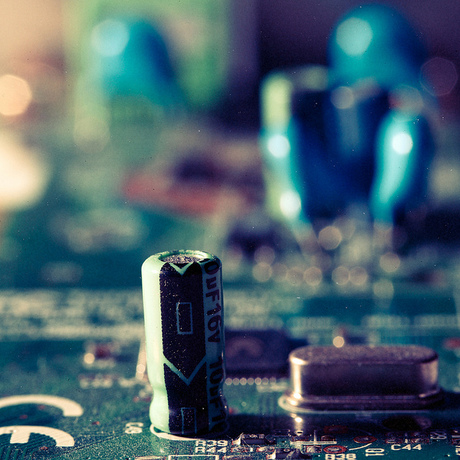Boffins lay groundwork for post-silicon era

IBM may be investing $3.38 billion ($3 billion) to prepare for the post-silicon era, but the company isn’t conducting the only research into the next-generation of computer chips. Two universities have announced breakthroughs that could help overcome the speed and energy-efficiency limitations of traditional silicon chips.
Researchers from the University of Cambridge have helped design prototype processors using a material with the promise to deliver speeds between 500 and 1000 times faster than the current products on the market.
The chips replace silicon with a phase-change material (PCM) based on a chalcogenide glass. The material is capable of changing from a crystalline and conducting state to a glassy and insulating state in as little as half a nanosecond.
PCMs are hardly a new technology - they were first developed in the 1960s. The material was originally applied to optical memory devices such as rewritable DVDs, but researchers have now turned their attention to using the technology to replace silicon-based processors and flash memory.
Modelling and testing of PCM-based devices show that logic-processing operations can be performed in non-volatile memory cells using combinations of ultrashort voltage pulses to trigger the state change. This is not possible in traditional silicon-based chips.
Published results from the research suggest that computers using PCM-based chips and memory could be capable of processing information up to 1000 times faster than current machines.
The processors were designed by researchers from the University of Cambridge, the Singapore A*STAR Data-Storage Institute and the Singapore University of Technology and Design.
“As demand for faster computers continues to increase, we are rapidly reaching the limits of silicon’s capabilities,” University of Cambridge Department of Chemistry Professor Stephen Elliott said.
Chipmakers are finding it hard to scale down manufacturing to sub-20 nm levels, and problems with data leakage serve as a physical limitation as to how small silicon chips can be produced. But PCMs have been shown to function down to around 2 nm, overcoming this limitation.
PCM logic and memory devices are also capable of processing multiple calculations per second, another feat not possible using silicon.
A traditional limitation of PCM devices is that they do not currently operate at the same speeds in silicon and exhibit a lack of stability in the starting amorphous phase. But the new research shows that by performing the logic-operation process in reverse - starting from the crystalline phase and then melting the PCMs in the cells - the materials are both much more stable and capable of performing operations much faster.
Elliott said the researchers believe PCM-based memory could eventually replace DRAM in computers. “Eventually, what we really want to do is to replace both DRAM and logic processors in computers by new PCM-based non-volatile devices,” he said. “But for that, we need switching speeds approaching one nanosecond. Currently, refreshing of DRAM leaks a huge amount of energy globally, which is costly, both financially and environmentally. Faster PCM switching times would greatly reduce this, resulting in computers which are not just faster but also much ‘greener’.”
Another university project aims to address the energy consumption of computer chips. MIT researchers are exploring a method involving using light, rather than electricity, to move data between transistors.
The university’s departments of Physics and of Electrical Engineering and Computer Science have designed a new technique for building light emitters using molybdenum disulfide (MoS2).
MoS2 is a promising light source for optoelectronic chips. Unlike other experimental on-chip light emitters, which use rarer materials and complex 3D geometries, MoS2 has the potential to retain strong optical properties when deposited as a single, atom-thick layer.
Of the three chief components of an optical circuit, the emitters are the hardest to build. The MIT’s research could pave the way for efficient optoelectronic chips.
Molybdenum is just one of several elements known as transition metals, and compounds made from other transition metals could potentially share this property, according to Institute Professor Emeritus Mildred Dresselhaus. “If you find it in one, then it gives you some incentive to look at it in the whole family.”
Four ways AI can finally make threat intelligence useful and not just noisy
Done poorly, threat intelligence is noise. But done well, it becomes one of the most powerful...
Australia’s top tech priorities for 2026
It is anticipated that AI will evolve from a pilot project to a productive standard, underpinned...
Why AI's longevity lies in utility, not novelty
The real potential of AI is in underpinning the invisible systems powering everyday business.







